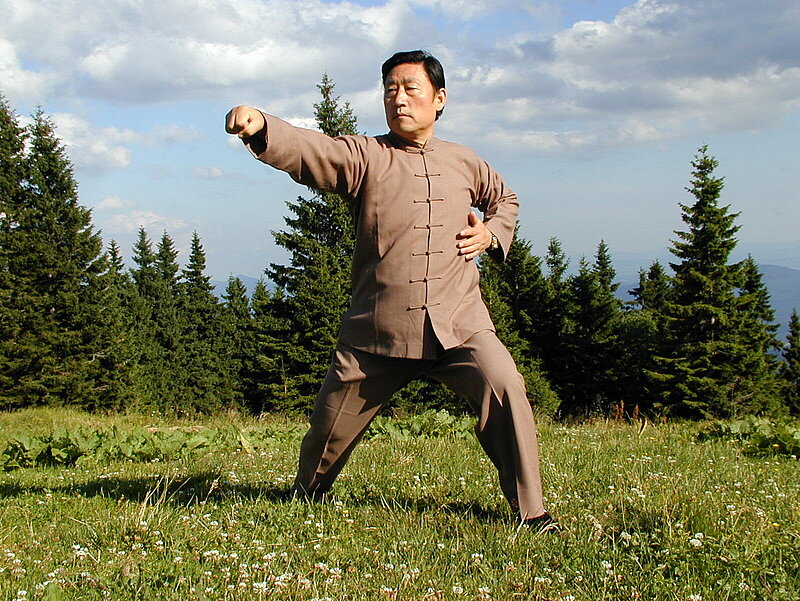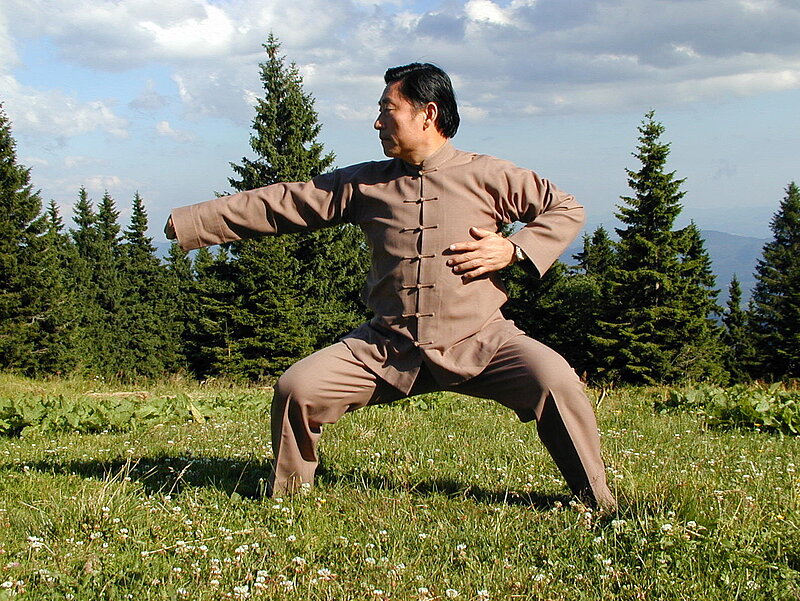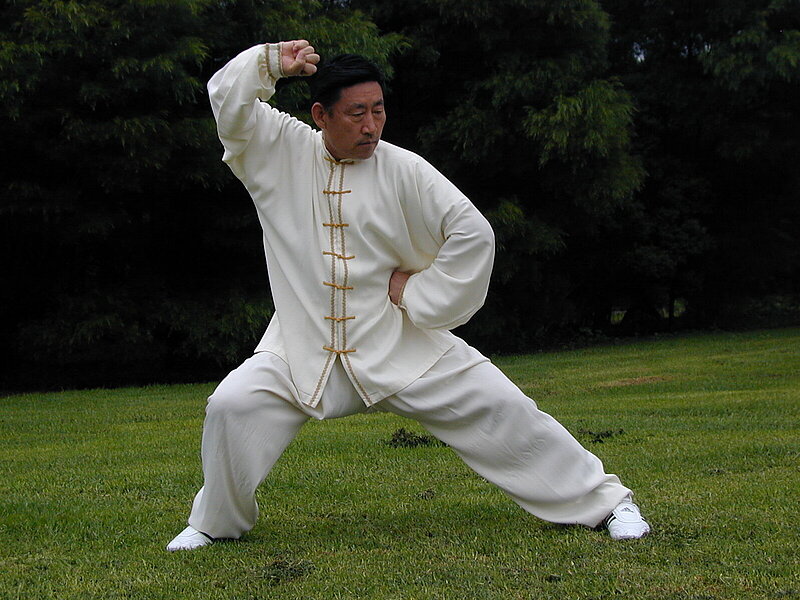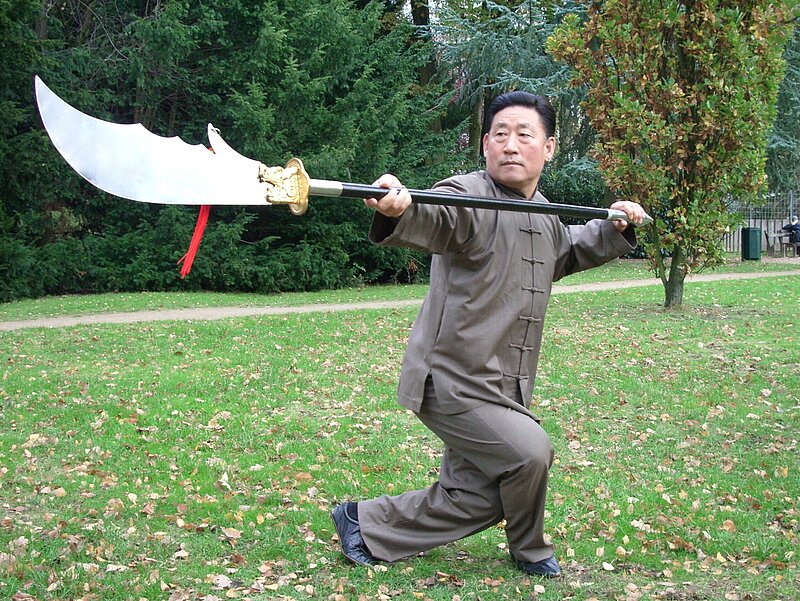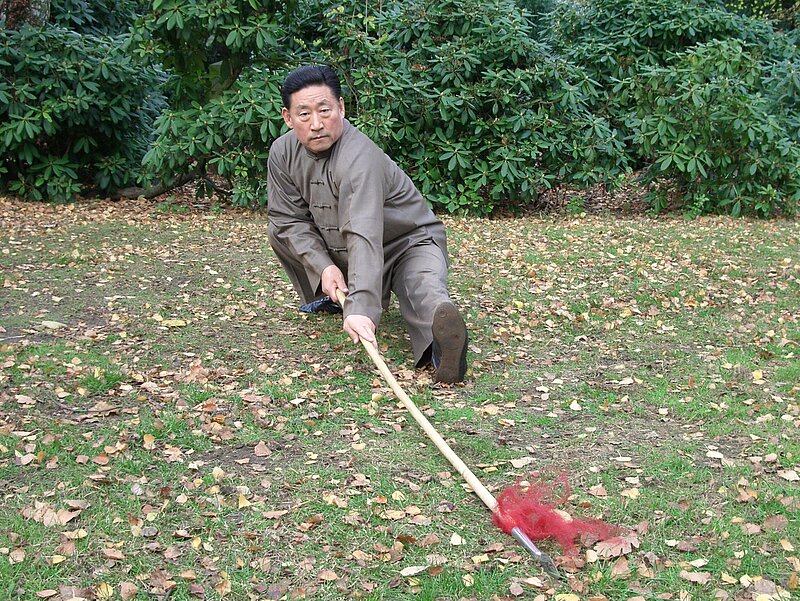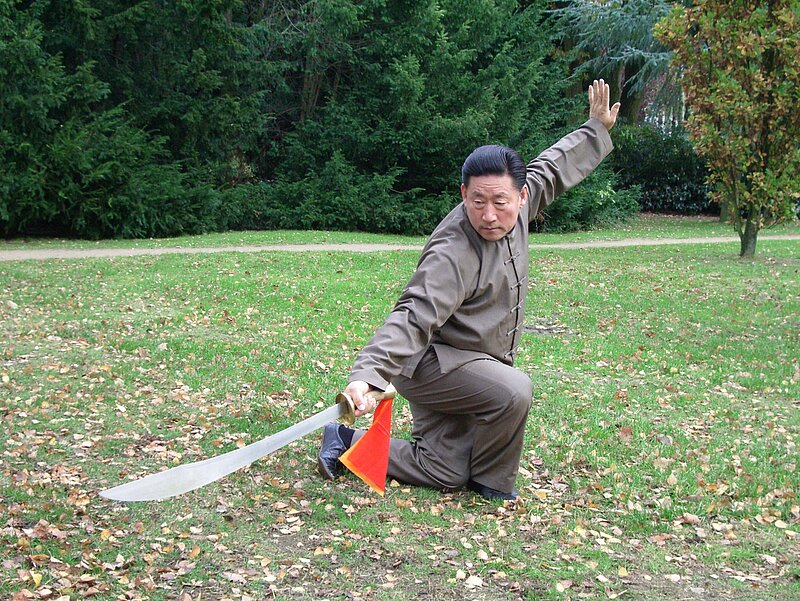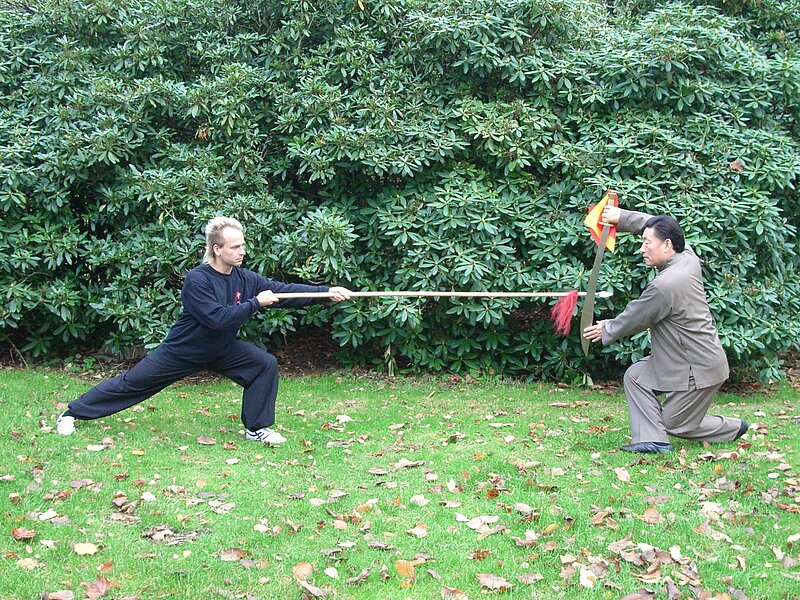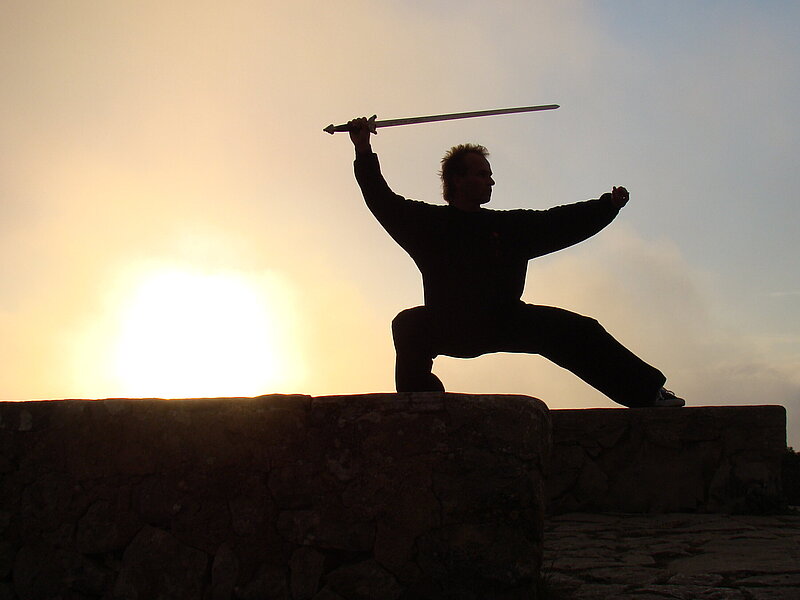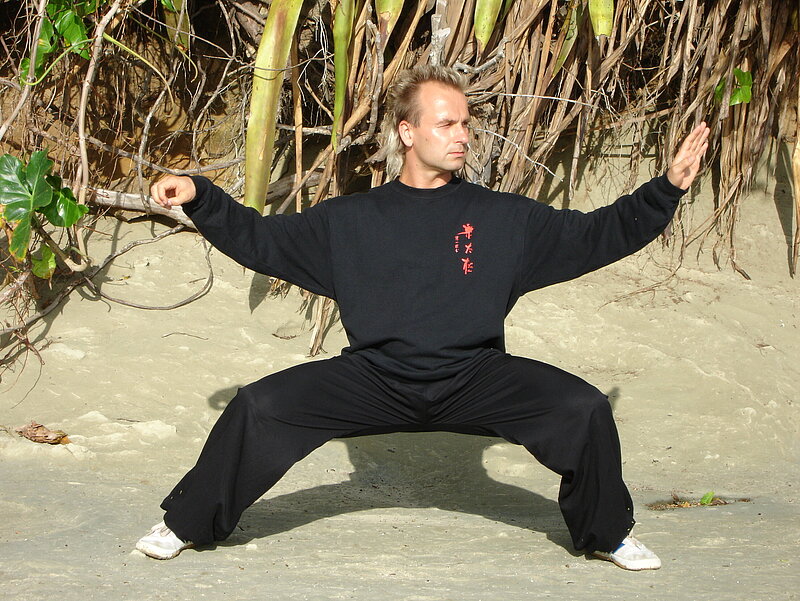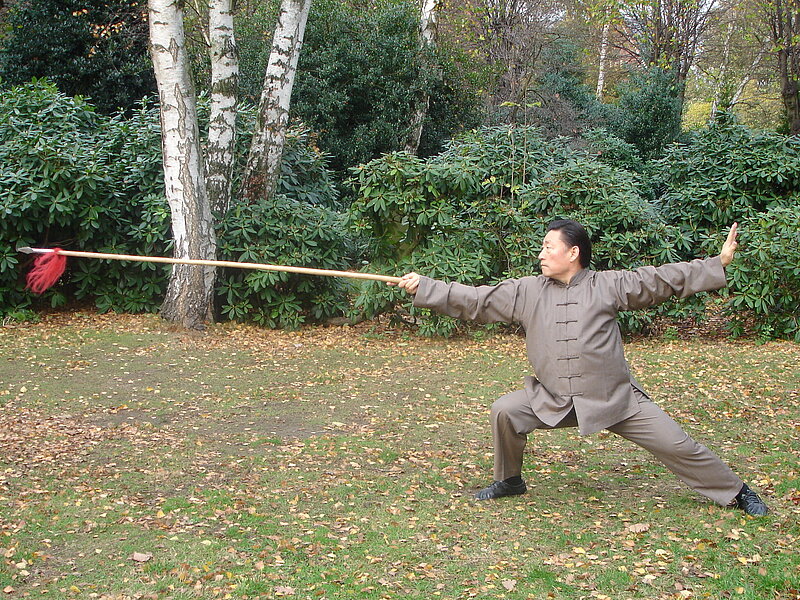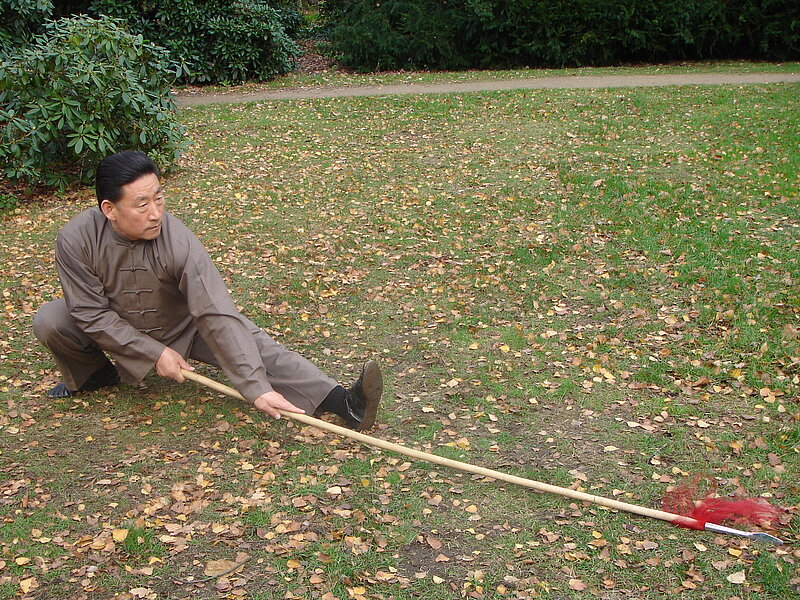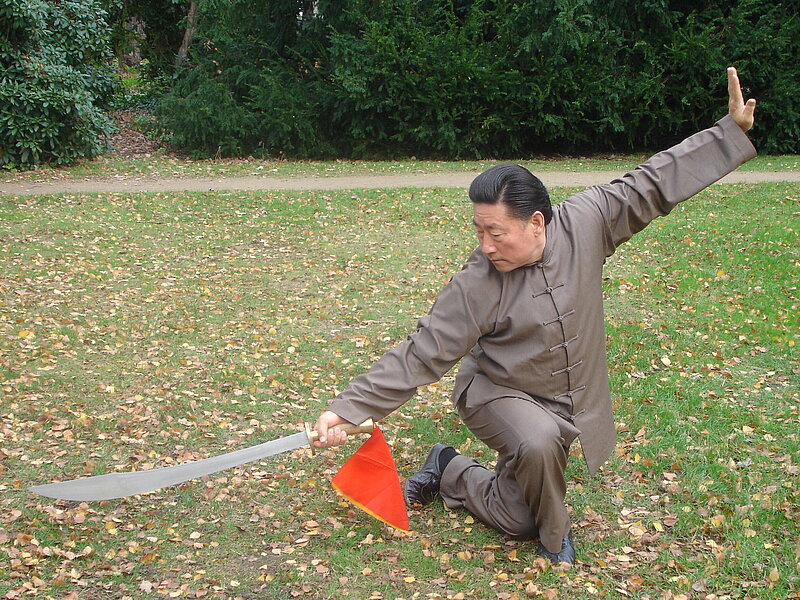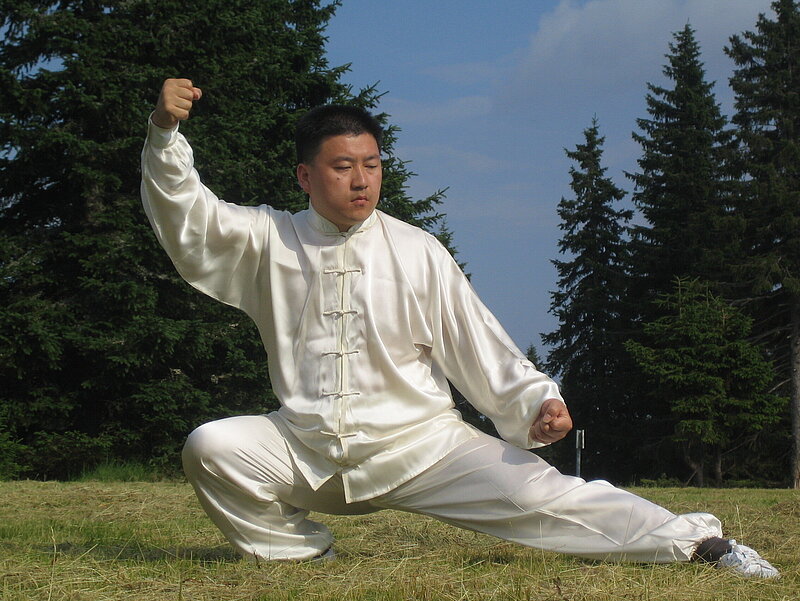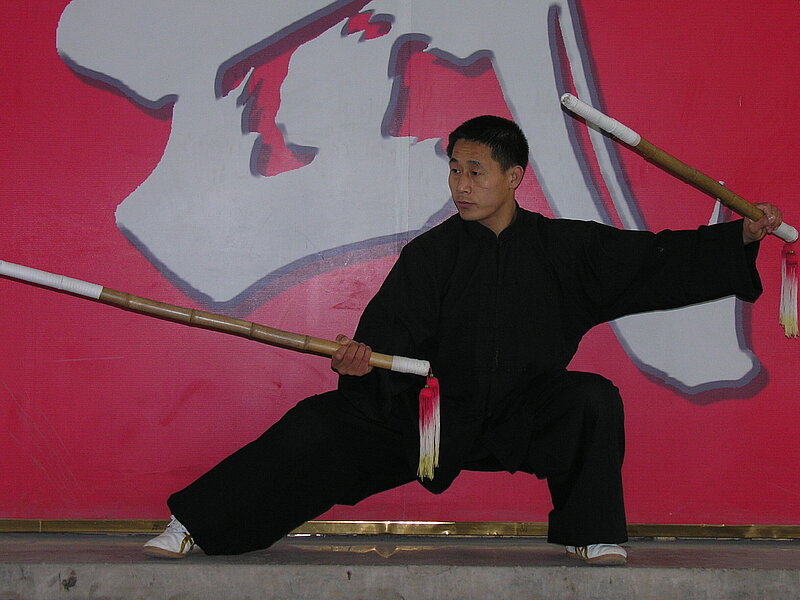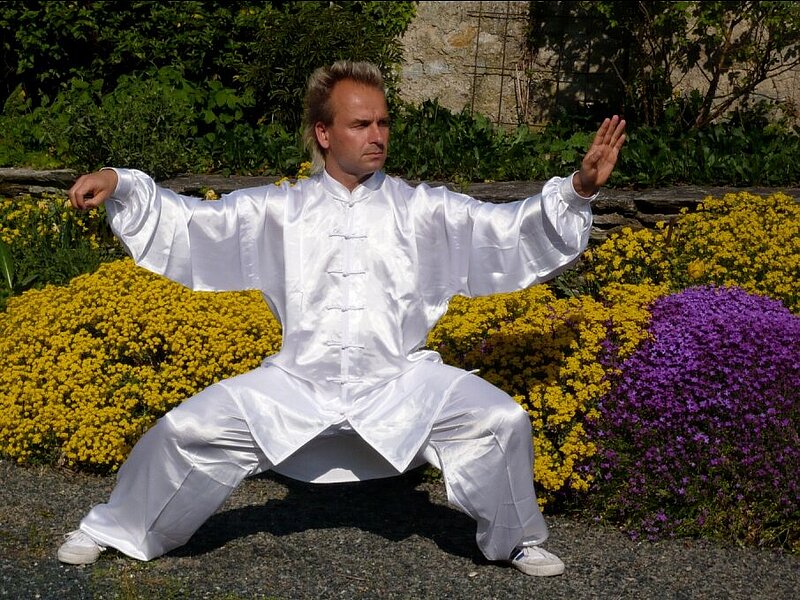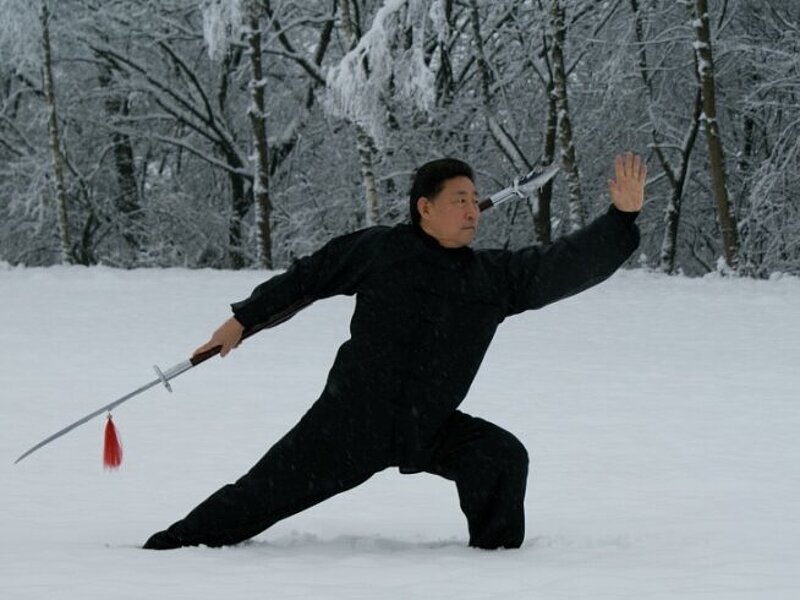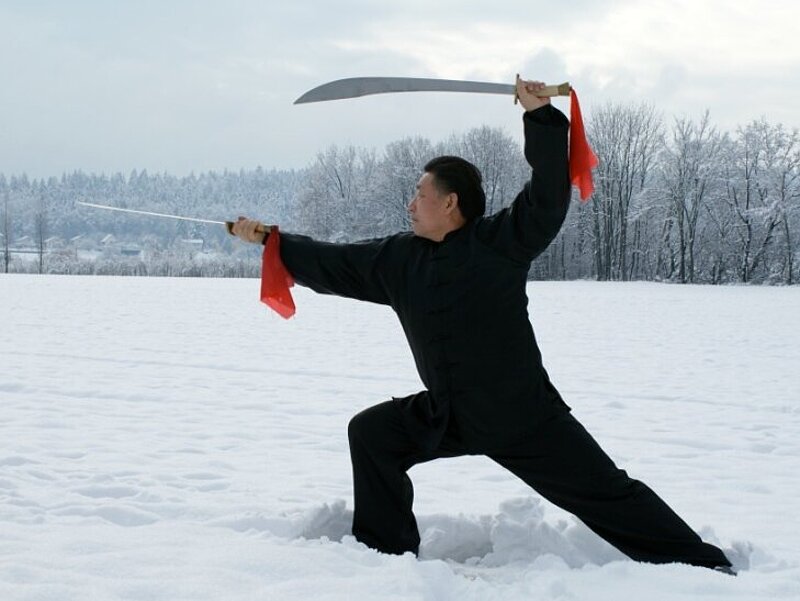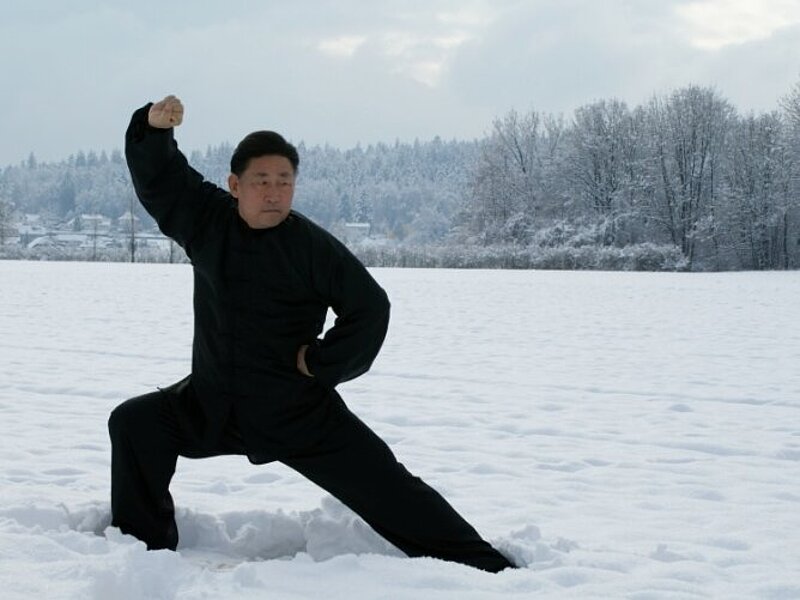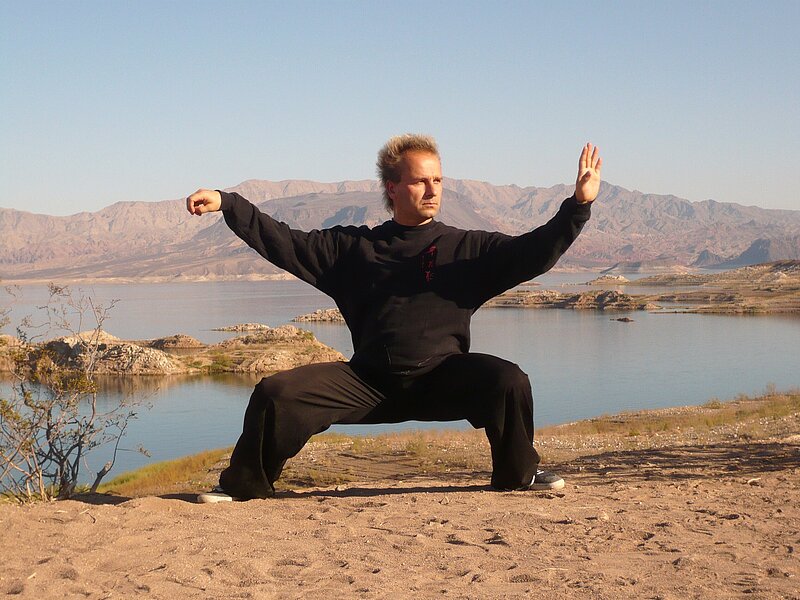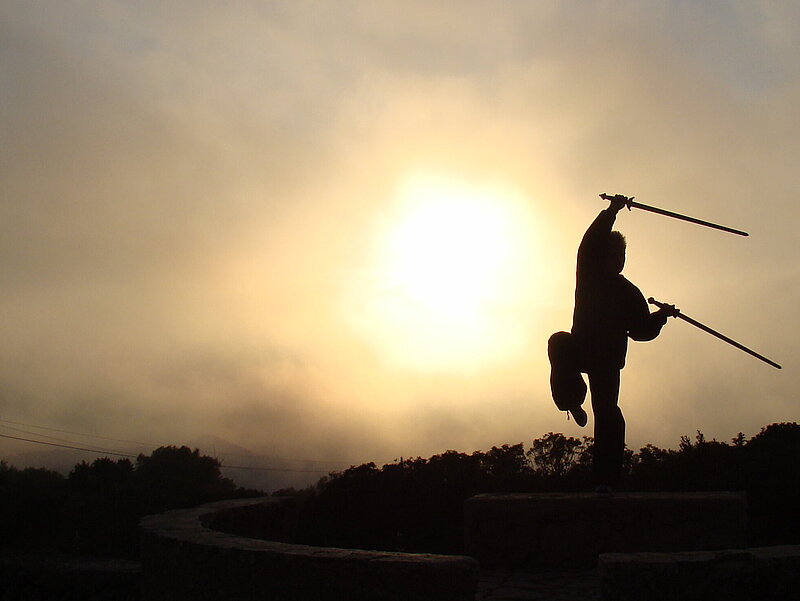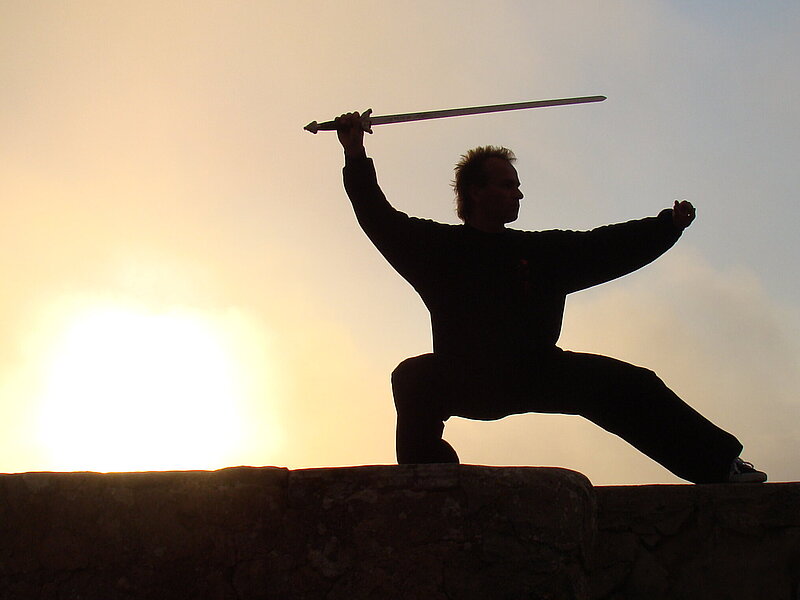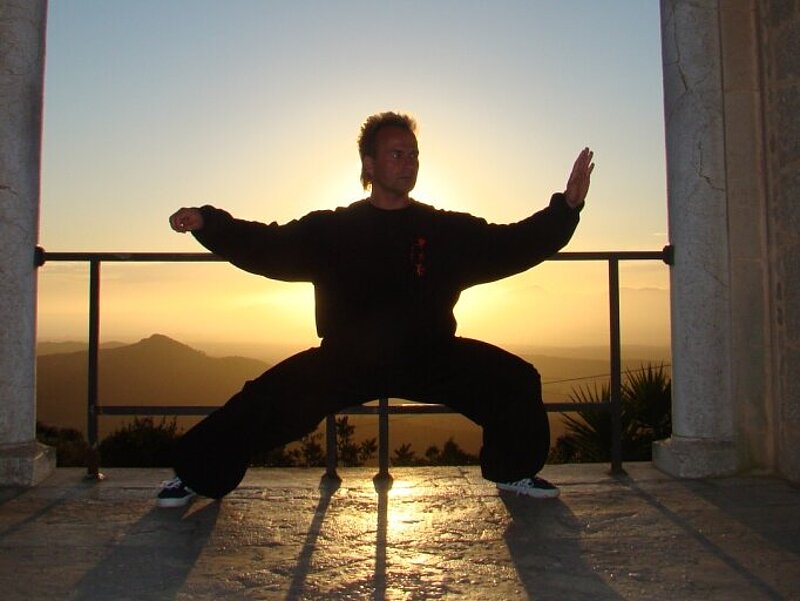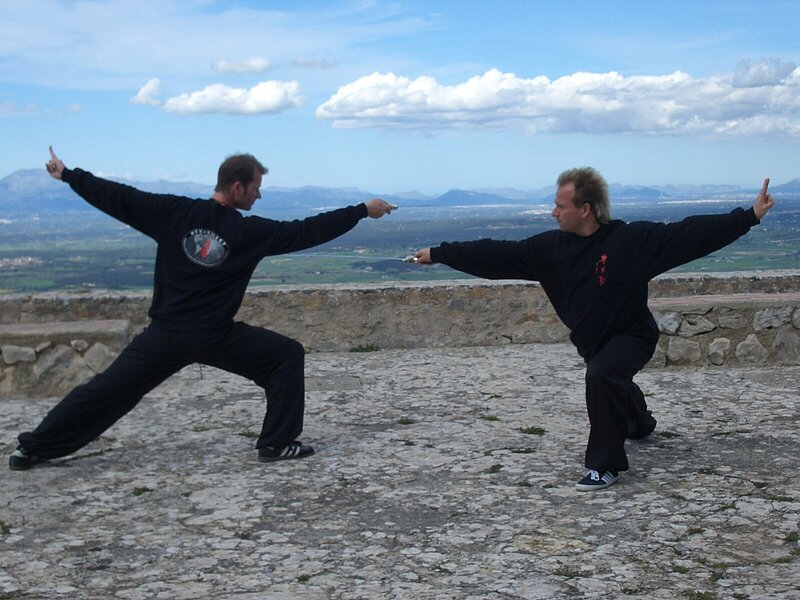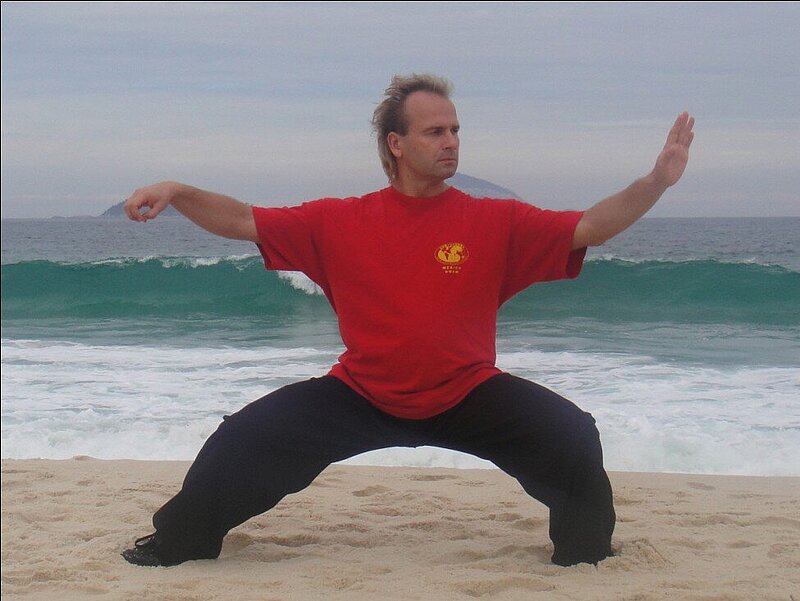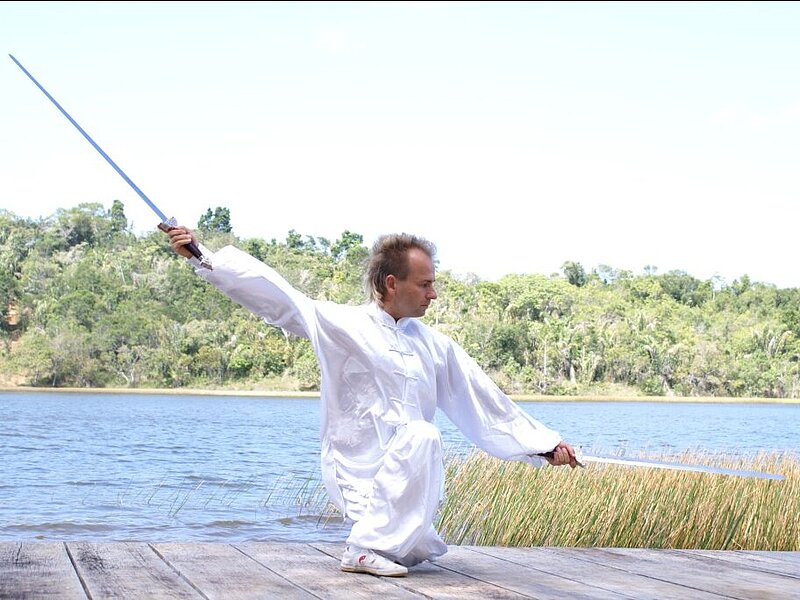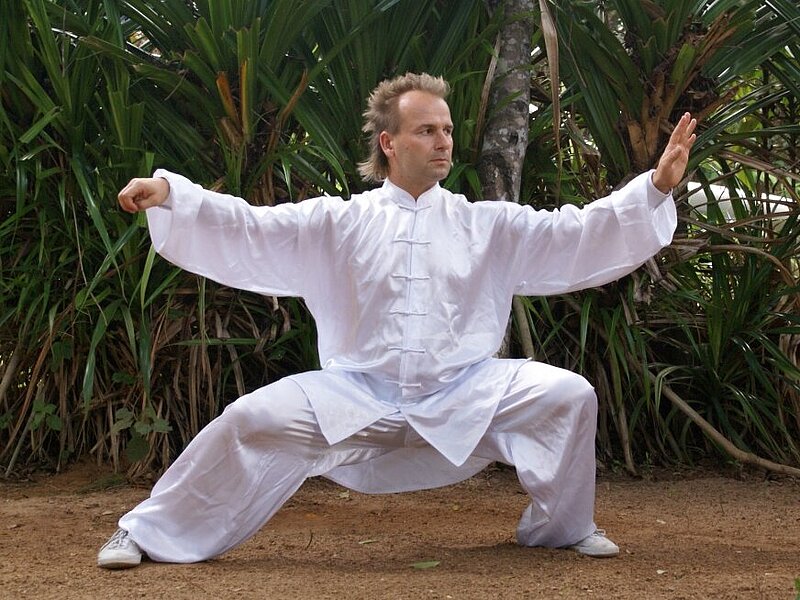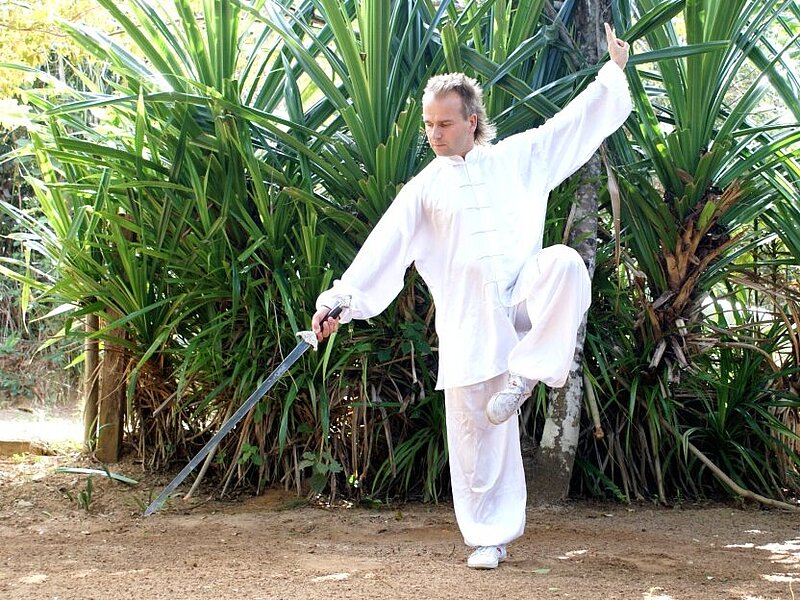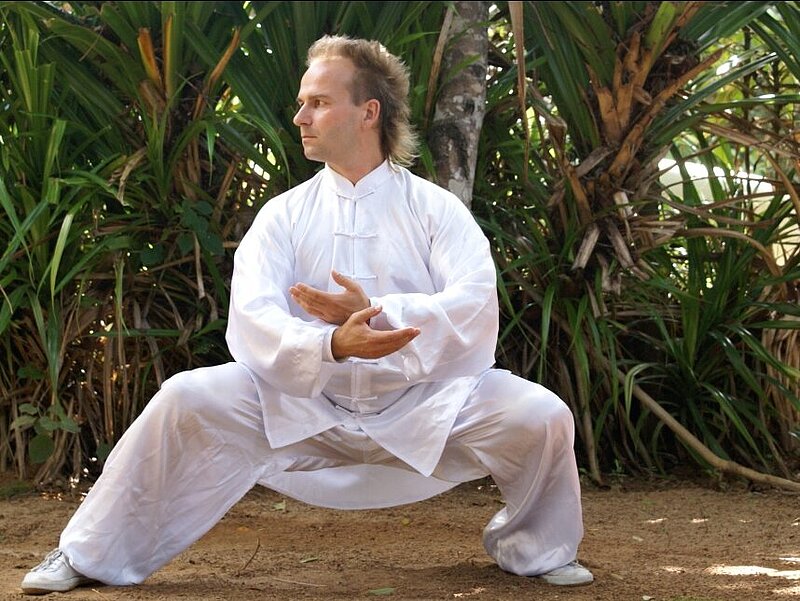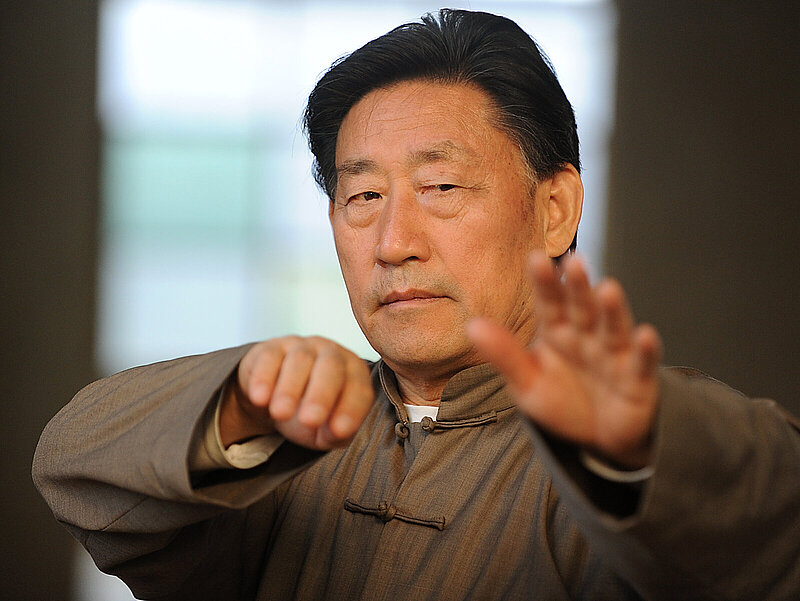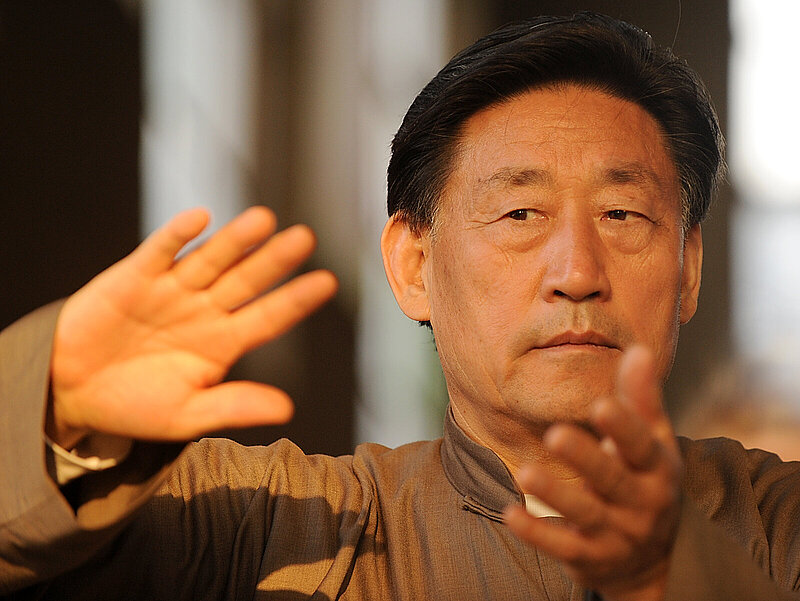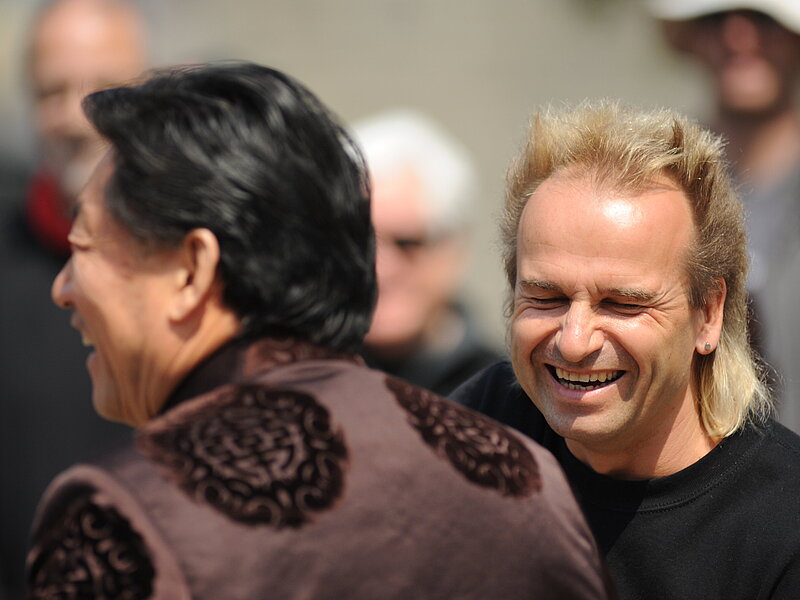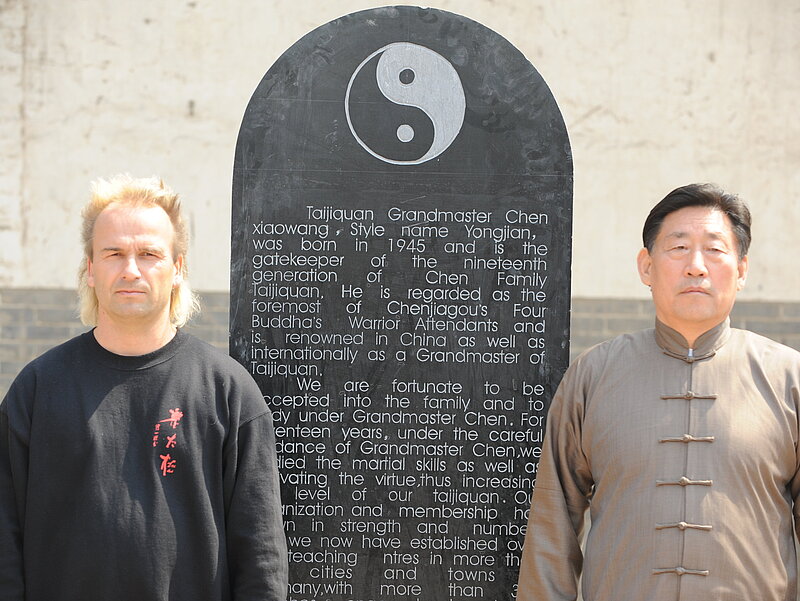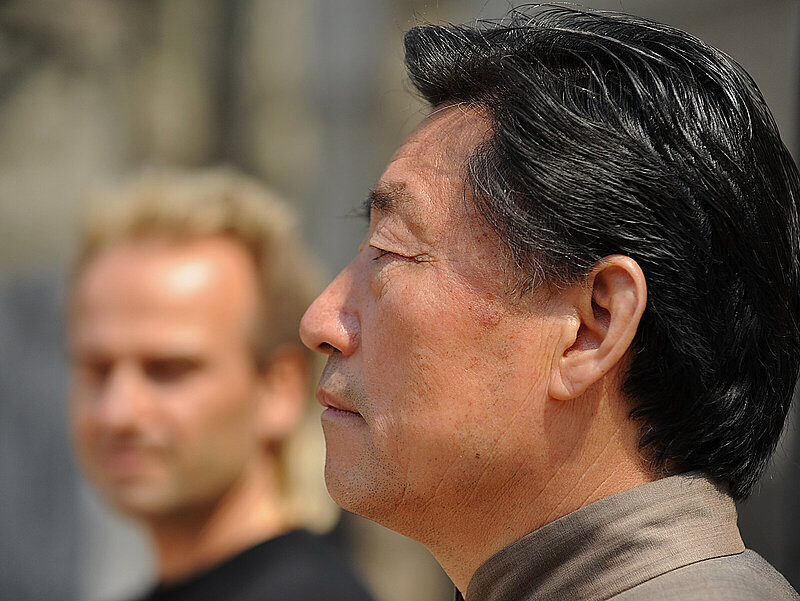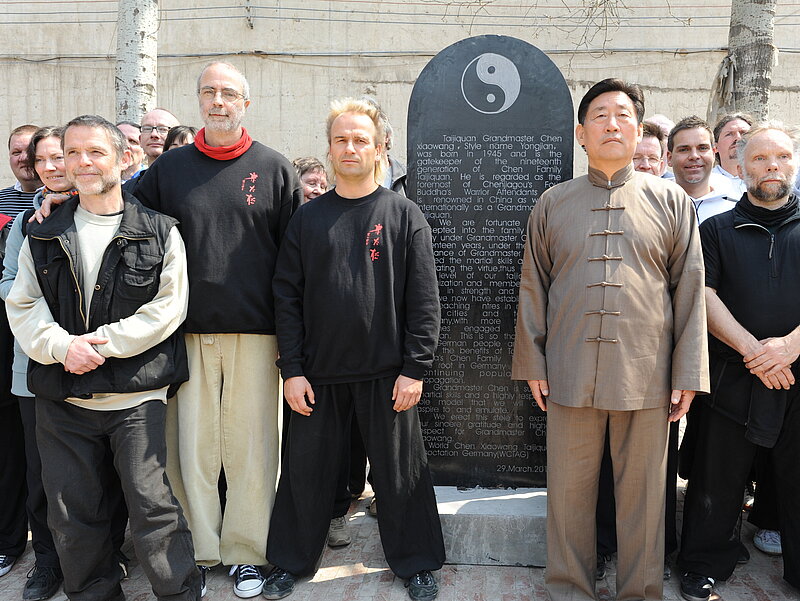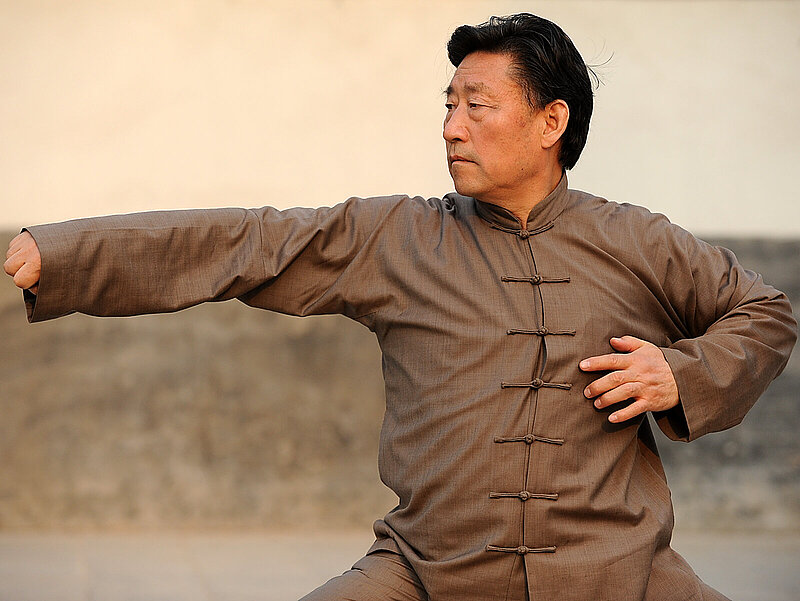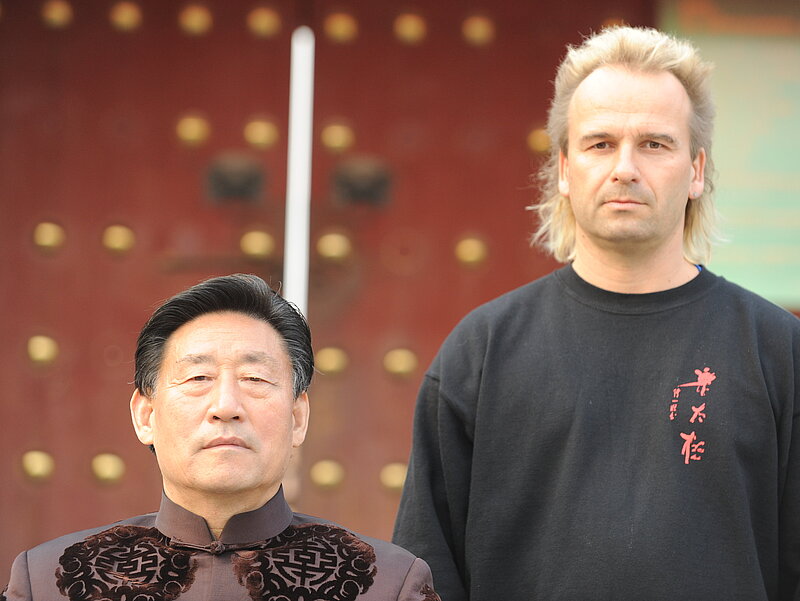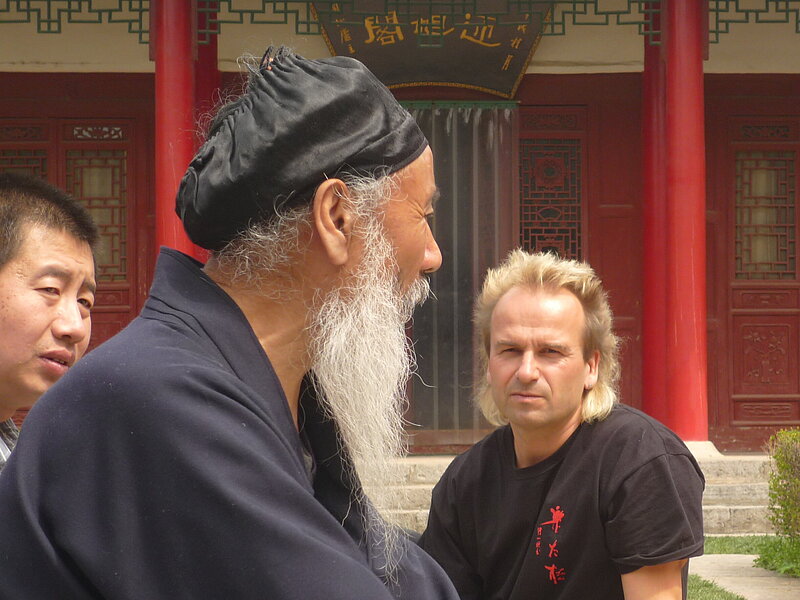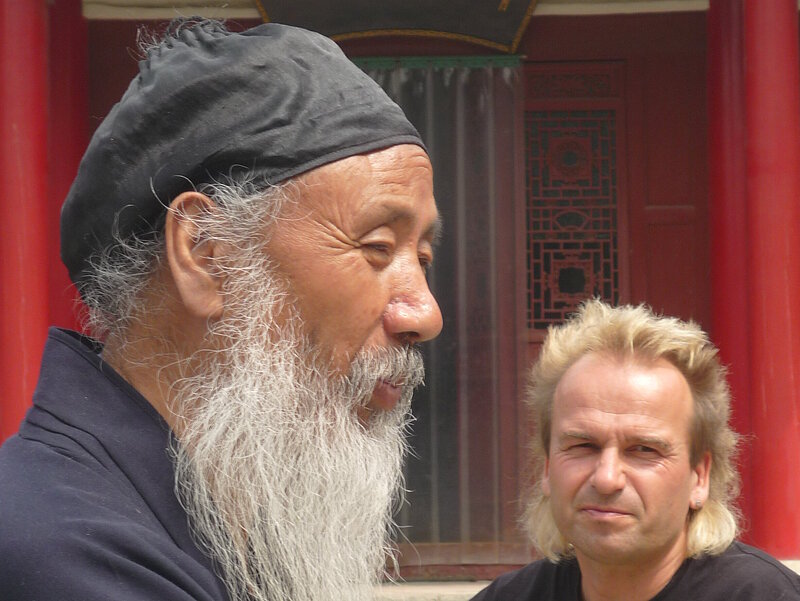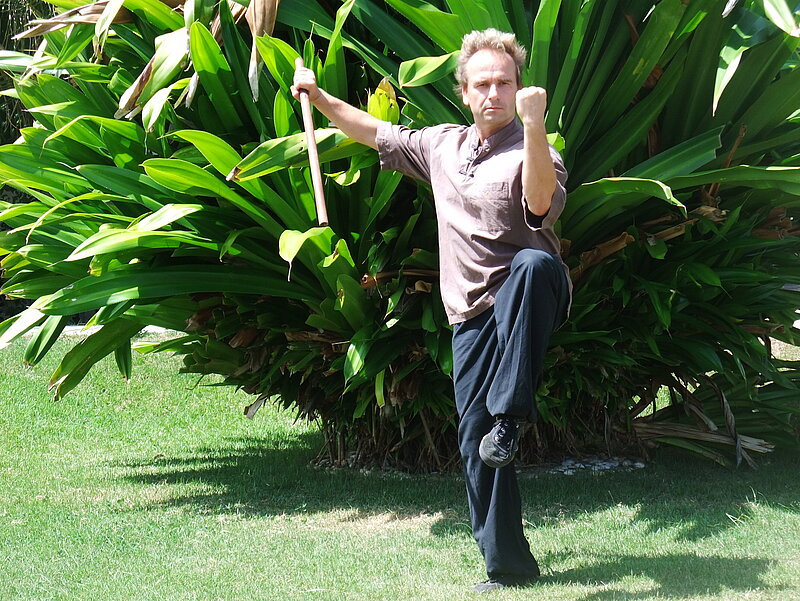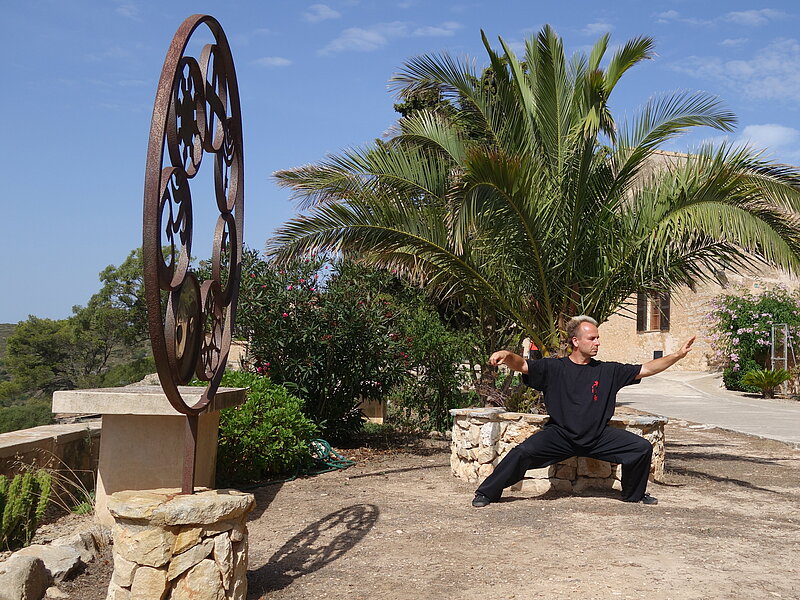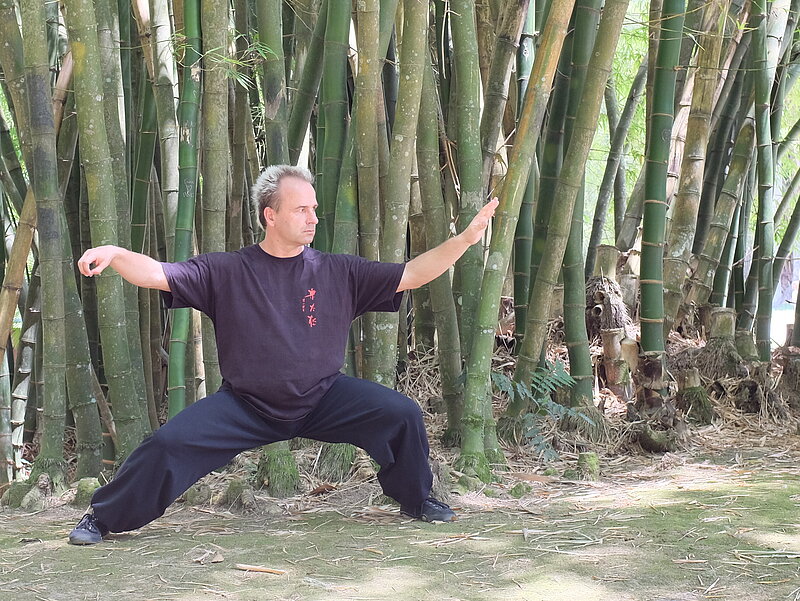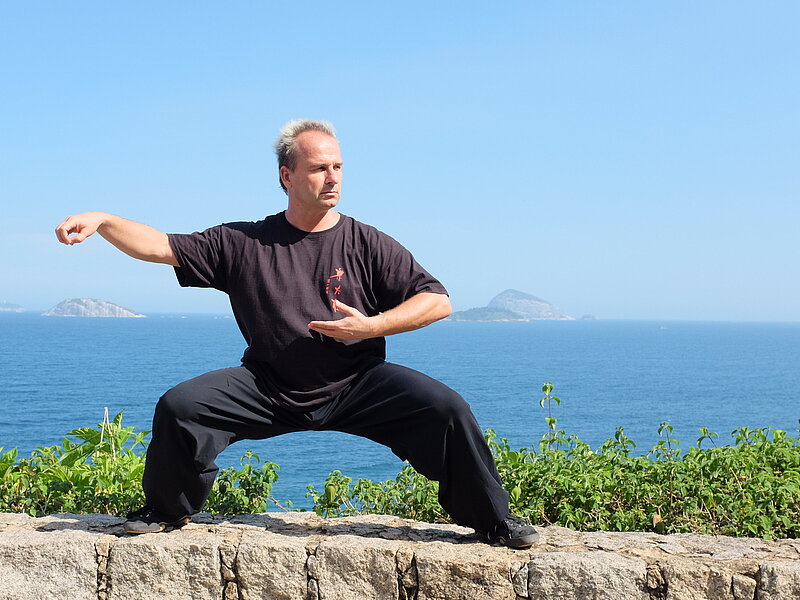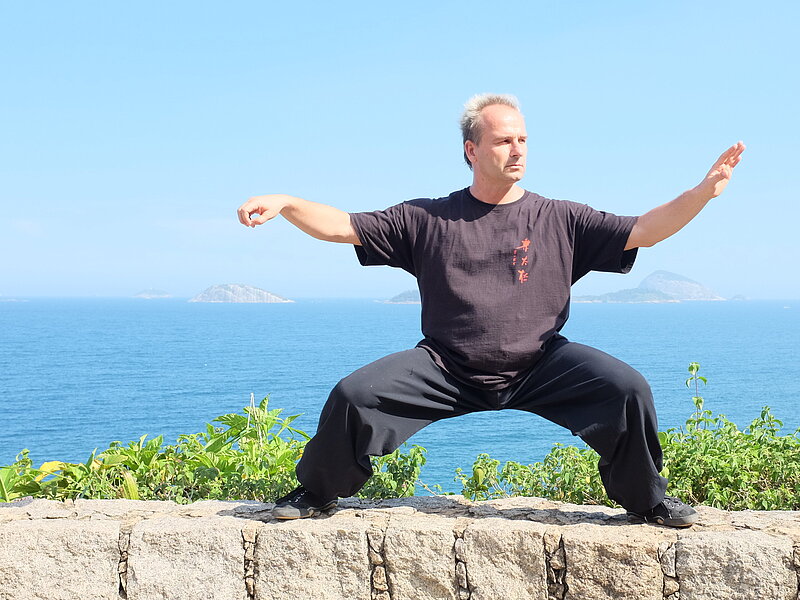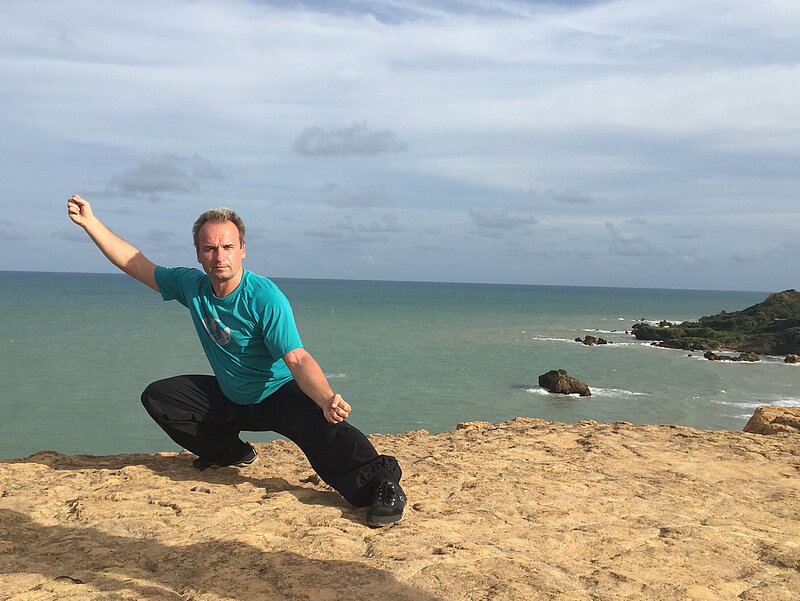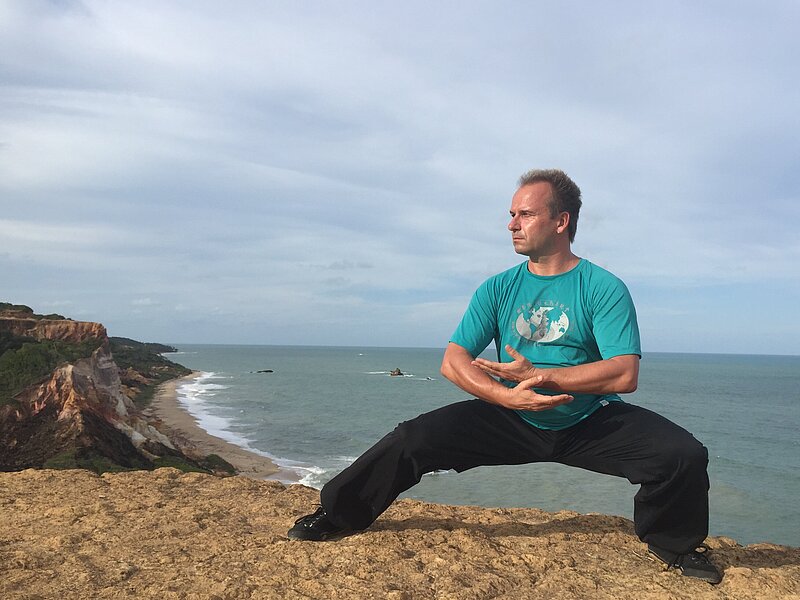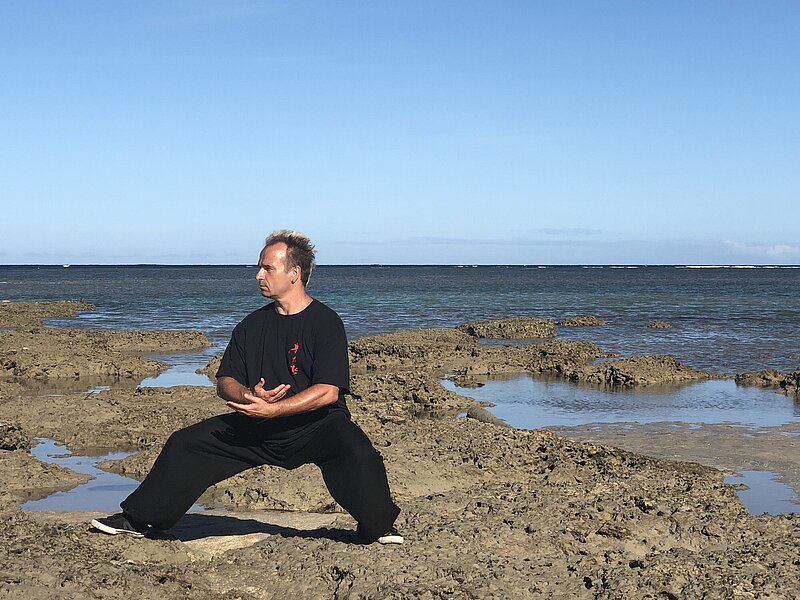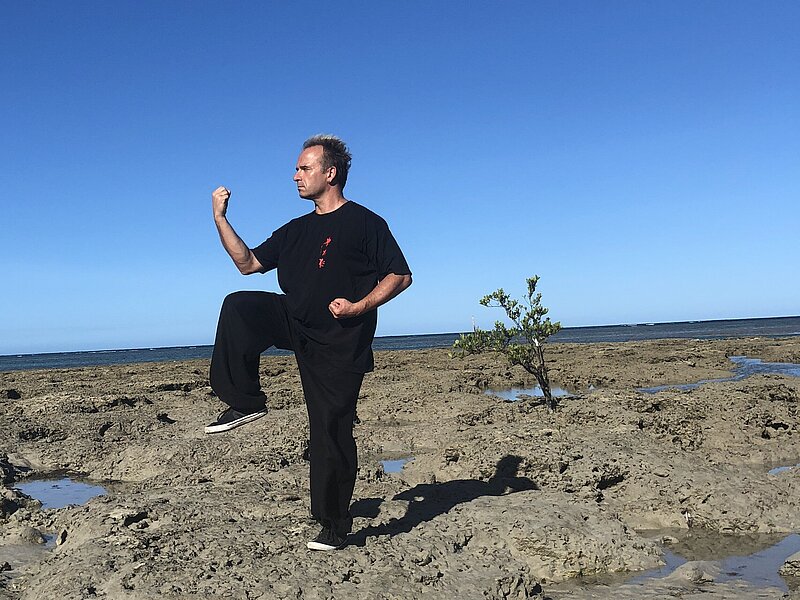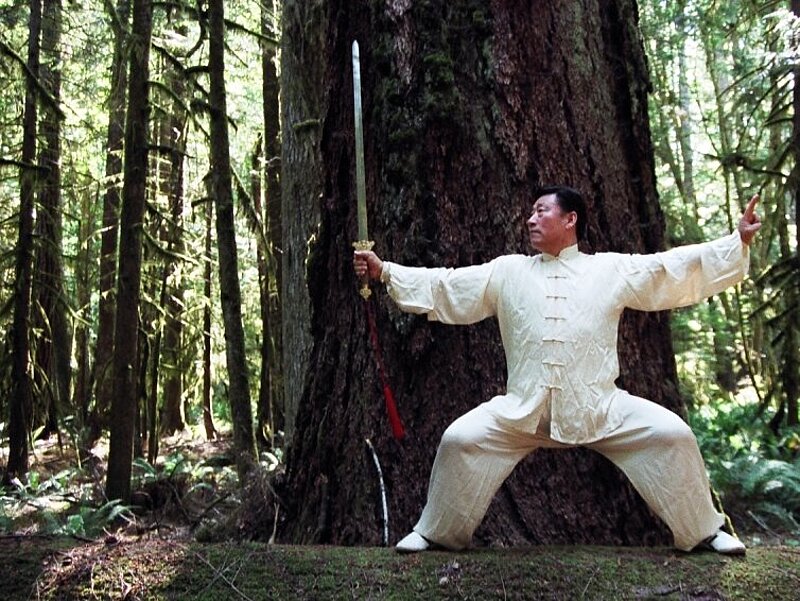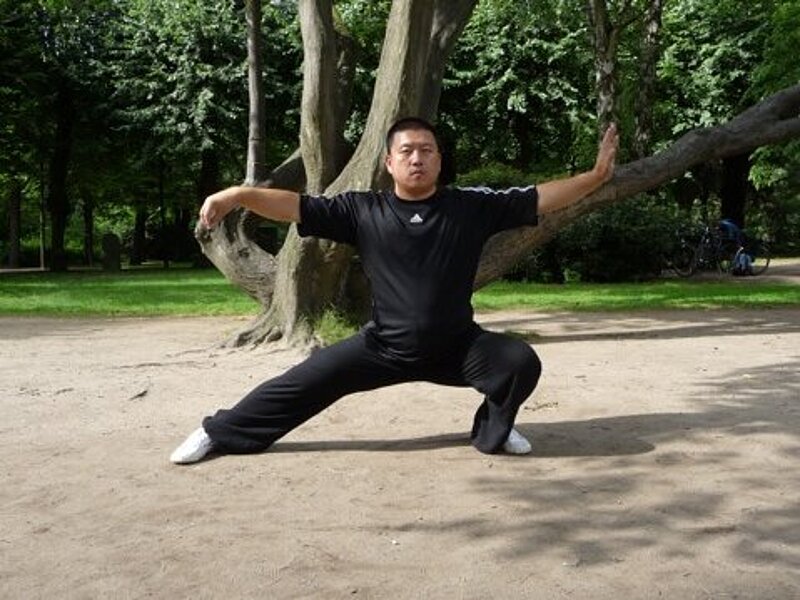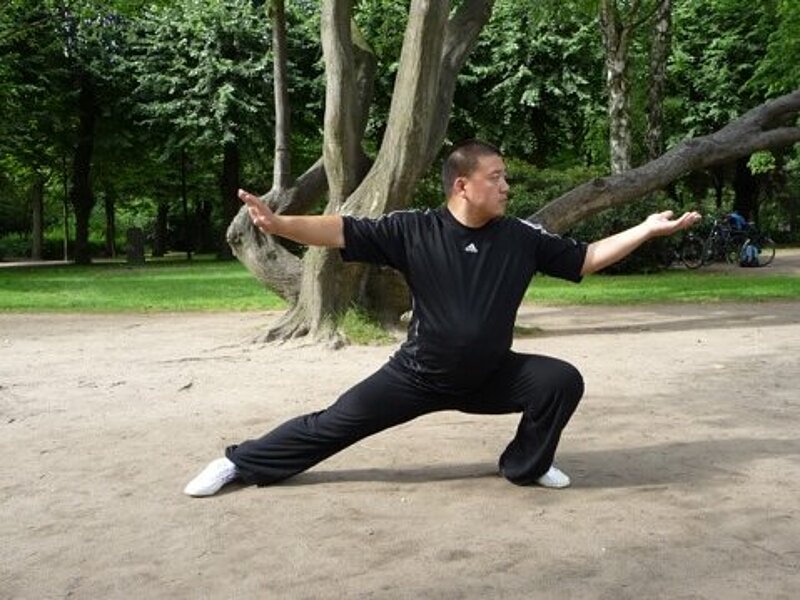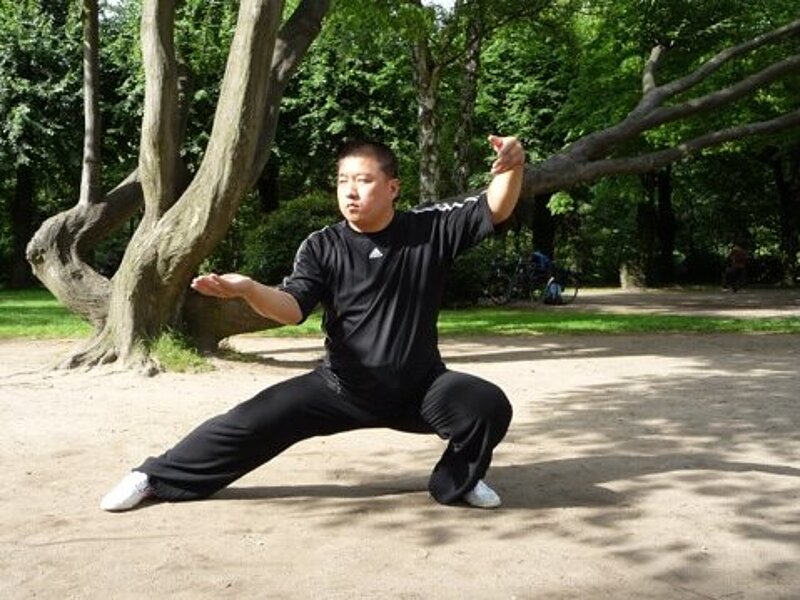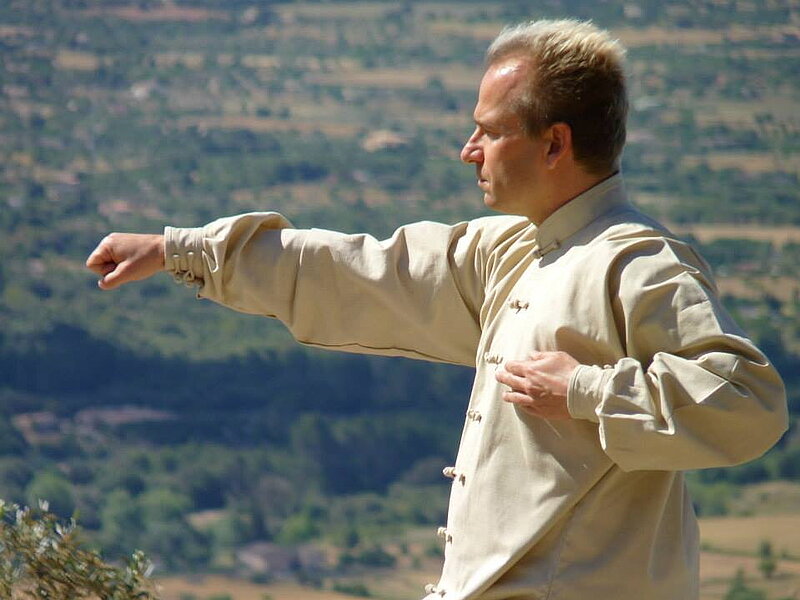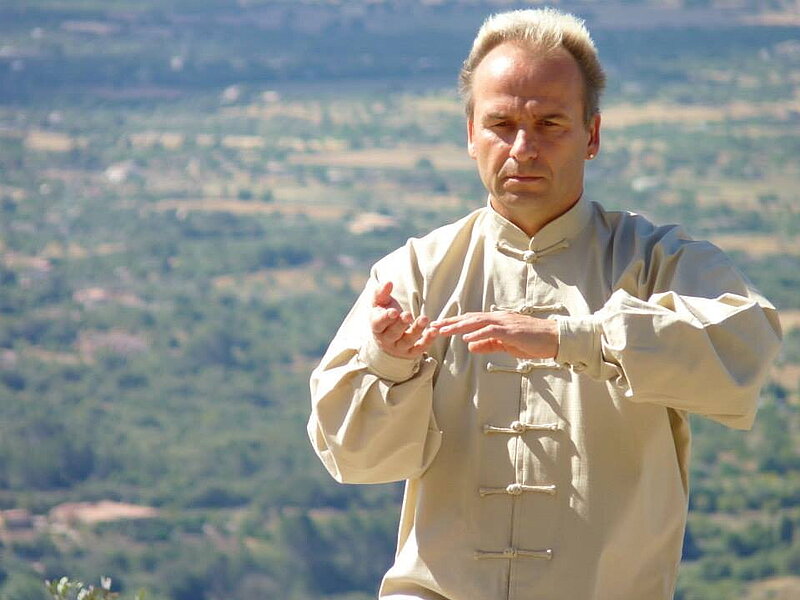Practicing Taijiquan in uncertain times

Lao jia yi lu (Chinese 老架一路, lǎo jià yī lù), directly translated means: old frame first form. This form is also called the 75 form because it is composed of 75 different so-called frames. It is the oldest Taiji form handed down. Sometimes it is also called the jewel of Chen style. I am always fascinated how the slow and precise practice of this form creates a deep calmness and connection within me.
One run of this form takes between 20 to 50 minutes. Currently I am running it again rather very slowly, so about 50 minutes. It really feels like flowing with a big old river. Indeed I move through space and time, but within myself rather like on a raft, at the same time also somehow motionless. Thoughts come to rest or are no longer present at all. With increasing time of practice a stillness and at the same time a deep connectedness arise. It is as if the separation of outside and inside dissolves. And finally a space, a "something", beyond space and time emerges. And there everything is good the way it is. It feels very, very good.
In these uncertain and exciting times, the daily Taiji training gives me confidence, hope and it strengthens me. It may sound a bit corny, but I am infinitely happy and grateful for it. And I hope to have helped some people in my life to be able to go to this space now. How does this actually come about and what exactly happens there? For Taiji training, the coming to rest of the mind is actually something like a prerequisite. In order to practice the form attentively and with concentration, the mind must already be calm. First is the wuji* (Chinese 无极, wújí). "Wuji" can be literally translated as "without extremity. However, as a technical philosophical word, it should be better referred to as "primordial state," "primordial ground," or "summit of nothingness." By Wuji is meant a disordered primordial state of the cosmos. This is a state without polarity, i.e. without yin and yang." (Martin Bödicker)

When Yin and Yang separate, Taiji, the eternal change, arises.
In order to come closer to the state of Wuji, the so-called "standing pillar", the standing meditation is practiced in our system. Therefore, it is often recommended to do the standing meditation before the form training. To practice the form really slowly and attentively, to notice all the inaccuracies, for this you need a quiet mind. That is why we first go into stillness, that is, in the direction of Wuji. Taijiquan then emerges from this Wuji.
In practice, however, it can also go like this: If I am already calm, I can just as well walk a form first and then follow it with the standing meditation. Simply because I feel like it. Not to want or to have to achieve something. Or also like this: The first form of the day helps me to calm down enough to imagine doing the standing meditation. After I have stood for a while, I am perhaps so curious about how this second form of the day will feel and what I will experience, that I immediately run another form. And so sometimes one form after the other comes about. Form running is a more advanced way of training. First come the basic exercises (silk exercises, reeling silk) as well as standing. Here we learn the principle of wai san he (Chinese 外三合, wài sān hé), the so-called outer 3 unions:
1. shoulders and hips join
2. elbows and knees join
3. hands and feet join
Chen Xiaowang in his book, the 5 levels of Taijiquan gives the following recommendations: While practicing, we should be careful to maintain these unions in the movement. If this is clear so far, then it is necessary to focus on the nei san he (Chinese 内三合, nèi sān hé), the so-called 3 inner unions:
1. xin yu yi he (Chinese 心与意合, xīn yǔ yì hé): Heart and mind flow together
Jan Silberstorff writes about the first of these inner confluences: Heart and mind flow together "therefore means to bring will, feeling, mind, emotions, in short our entire mental inner life, to unity ... Thus one hundred percent mental power and mental strength can arise ... In the ideal, a unidirectional consciousness arises that is concentrated without distraction. A consciousness that not only leads the movement, but is the movement." (Chen, p. 250)
2. qi yu li he (chin. 气与力合, qì yǔ lì hé): Qi and power flow together
Here, the internal energy, the qi is guided to join with the muscles, allowing the muscles to be used in a much more refined way. (ibid. p. 252)
3. jin yu gu he (chin. 筋与骨合, jīn yǔ gǔ hé): Ligaments, tendons and bones flow together
"Jin yu gu he finally means that the tendons and bones not only stand for themselves, but as a symbol of all connective tissue, nerves, organs, and everything we have in the body." (ibid. p. 253)
So then, over time, this flow of energy that I described at the beginning arises, which only feels good. Self-forgetting. I myself step back behind the form. It flows by itself.
Jan Silberstorff describes it this way: "This creates an extremely deep, penetrating, holistic and complete feeling. To the effects of strength and health, this results in a state of absence of worry and anxiety. A free state of real detachment." (ibid. p. 254)
As I said, form training is already relatively advanced training. We can't get there without basic training. There is no shortcut as the saying goes. Any attempt at a shortcut would be a detour. But just now I realize again: It is worth it.
Regular Taiji training first and foremost gives us a sense of well-being. Already the standing meditation gave me more and more a feeling of my own center. We perceive ourselves. We fill the space within us. We can fill the body more and more with awareness. Standing strengthens our center, our stability, it invigorates us. Practicing gives us self-confidence. We stand more securely in this world. The more secure we feel, the better we can relax. And so we move more safely and relaxed through this world. Or let ourselves move. Softly and without wasting energy unnecessarily.
Intentionless, oblivious, free of fears and overzealousness.
Taijiquan as an art of living offers a wonderful possibility to do something good for oneself: to come to rest, to center oneself better and better and thus to find more stability in order to be able to better withstand the adversities of normal everyday life. Especially in difficult times, it is then an immeasurable treasure.
Grateful.
Sasa Krauter
28-Apr-202
www.sasakrauter.de
Taijiquan can only be experienced in all its depth in practice. It is a long process and yet already in the first hours noticeably beneficial.
For the different spellings Taiji, Tai Chi etc. please click here.
Sources:
taiji-forum.de/glossar/wuji, Martin Bödicker
CHEN - Classical Taijiquan in living style, Jan Silberstorff
The 5 levels of Taijiquan, Chen Xiaowang

